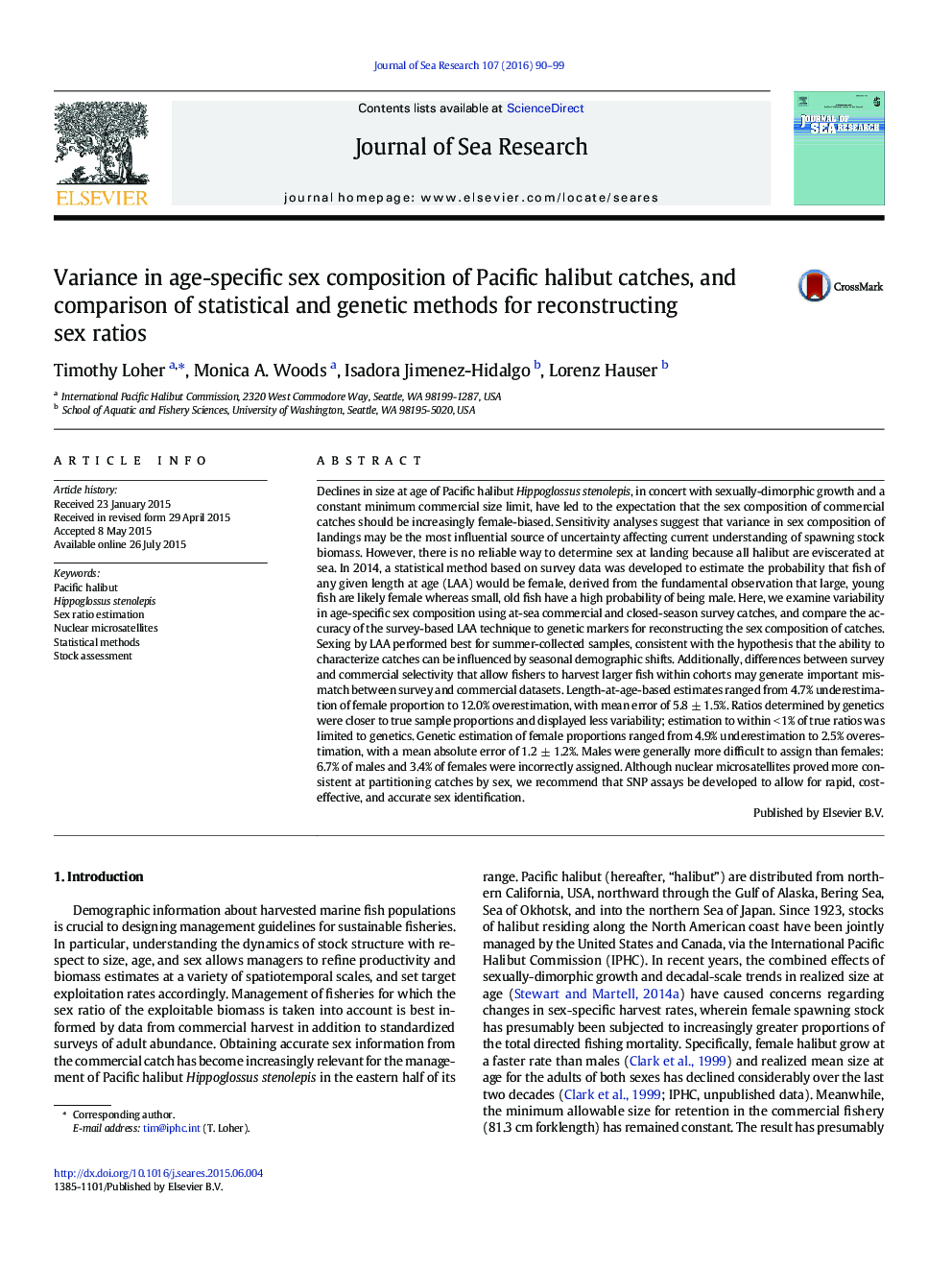| کد مقاله | کد نشریه | سال انتشار | مقاله انگلیسی | نسخه تمام متن |
|---|---|---|---|---|
| 4549640 | 1328088 | 2016 | 10 صفحه PDF | دانلود رایگان |
• Uncertainty regarding sex ratio in Pacific halibut harvests exists due to the requirement that commercially-harvested halibut be eviscerated at sea.
• This uncertainty represents the greatest known sensitivity in current stock assessments.
• Sex ratios within commercial catches were re-estimated independently using two methods: a statistical length-at-age method based on standardized survey data; sex-linked nuclear microsatellite assays.
• Genetic techniques proved more consistently accurate than statistical methods, presumably due to variance in stock demographics in time in space that are not adequately characterized by summer setline survey data.
• Development of advanced genetic techniques (SNP development) is recommended.
Declines in size at age of Pacific halibut Hippoglossus stenolepis, in concert with sexually-dimorphic growth and a constant minimum commercial size limit, have led to the expectation that the sex composition of commercial catches should be increasingly female-biased. Sensitivity analyses suggest that variance in sex composition of landings may be the most influential source of uncertainty affecting current understanding of spawning stock biomass. However, there is no reliable way to determine sex at landing because all halibut are eviscerated at sea. In 2014, a statistical method based on survey data was developed to estimate the probability that fish of any given length at age (LAA) would be female, derived from the fundamental observation that large, young fish are likely female whereas small, old fish have a high probability of being male. Here, we examine variability in age-specific sex composition using at-sea commercial and closed-season survey catches, and compare the accuracy of the survey-based LAA technique to genetic markers for reconstructing the sex composition of catches. Sexing by LAA performed best for summer-collected samples, consistent with the hypothesis that the ability to characterize catches can be influenced by seasonal demographic shifts. Additionally, differences between survey and commercial selectivity that allow fishers to harvest larger fish within cohorts may generate important mismatch between survey and commercial datasets. Length-at-age-based estimates ranged from 4.7% underestimation of female proportion to 12.0% overestimation, with mean error of 5.8 ± 1.5%. Ratios determined by genetics were closer to true sample proportions and displayed less variability; estimation to within < 1% of true ratios was limited to genetics. Genetic estimation of female proportions ranged from 4.9% underestimation to 2.5% overestimation, with a mean absolute error of 1.2 ± 1.2%. Males were generally more difficult to assign than females: 6.7% of males and 3.4% of females were incorrectly assigned. Although nuclear microsatellites proved more consistent at partitioning catches by sex, we recommend that SNP assays be developed to allow for rapid, cost-effective, and accurate sex identification.
Figure optionsDownload as PowerPoint slide
Journal: Journal of Sea Research - Volume 107, Part 1, January 2016, Pages 90–99
